The CBD Expert Series: From Masterchef to Cannabis Chef with Nick Nappi
If you can cook for—and survive—Gordon Ramsey, you can cook just about anything. Testament to this is third runner-up and fan favorite from Season 6 of MasterChef, Nick Nappi.
Nappi is now based in San Diego running Nappi Roots Culinary, a company dedicated to cooking upscale, cannabis-infused cuisine. It’s a far cry from the frozen pizzas and pints of Ben and Jerry’s marijuana-induced munchies have come to be associated with.
Recently, CBD Oil Review’s Nick Musica sat down with Nappi to discuss his culinary journey and experience with cannabis. This Q&A will leave you hungry for more from this revolutionary MasterChef.
Nick Musica (CBD Oil Review): Can you tell a little bit about your background and inspirations as a chef?
Nick Nappi (Nappi Roots Culinary): Sure. I am Nick Nappi from San Mateo, California. Grew up in Foster City. Spent a lot of time in San Francisco. Spent a lot more time in the kitchen, whether it was with my mom who was cooking for me and my sister, or it was with my grandma, or even my stepmother, Debbie, who's an amazing Italian chef. And that's where most of my inspiration came from.
Just watching these three women who worked their asses off, who are well-respected in their professional world, be able to corral their families into one place with food was something that mesmerized me because we have a big family. We're all really, really different. All of my family members are really different and super busy. And the one way that we got everybody together, was around the dinner table, and these three women did it just amazingly.
How did you end up on MasterChef?
I started running with that passion for cooking not very long ago. I'd say about six years ago. Then, my wife said, “Guess what? I'm signing you up for MasterChef.” And I said, “I don't want to do that because it's not really my thing. I'm not really one of those guys. I'm not a big reality TV star or fan.”
And it didn't matter. My wife's in charge. She's the boss. That's how it goes.
So I went with it and luckily, I did listen to her because out of the thousands of people that tried out, I got into the top 100, and then to the top 20, and then all the way to fourth place and fan favorite. It was just an amazing opportunity to be able to work with such amazing minds like Gordon Ramsey, Graham Elliot, and Christina Tosi.
Then, I just hit the ground running.
Chef Nick Nappi presenting Gordon Ramsey with a “standout,” sweet and savory breakfast dish during Season 6 of MasterChef.
What was life like after MasterChef?
I came back to San Diego and I jumped into the kitchen life and started washing dishes and was working 12- to 16-hour days, double shifts, couple of different restaurants at a time until I was finally allowed to be called a chef. Not too long after that, I helped open up an amazing bar-gastropub in Little Italy with an even more amazing person, Jim Barone. He believed in me. He interviewed me, believed in me, saw my vision of a menu. Financially and emotionally, and as a friend, he supported me in my first menu ever in my first kitchen ever. And it went great.
Our first year we were voted one of the top new restaurants in San Diego, which is an amazing feat because every ten steps in any public area in San Diego is a restaurant. So to be able to do that was really a pat on the back.
I ended up leaving there, and then I started working with a tremendous mind, Chef Drew Bent, who opened up Lola 55 where I was lucky enough to be a part of the kitchen development from the very, very beginning until they won their Gourmand award, which is basically like the coolest thing you could do in a casual restaurant. It's like up there with getting the Michelin Star.
So to be able to put that on my resume was never something that I had in mind. Now it's added to the bucket list, after it already happened—but it happened.
And during that time, I started to cook with cannabis. I've been a “pothead” my entire life. But when I say pothead, I mean pothead like how we should be looked at now.
What do you mean by that?
I'm a motivated go getter that has anxiety and suffers from a little bit of depression. The cannabis is what kept me even and kept my drive going as hard as it has, as opposed to the pothead you see in his mom's basement in Costco sweatpants playing video games.
I was out in the streets running as hard as I possibly could, trying to master my craft, and without cannabis I couldn't have. So I was looking for ways to add it into my daily diet as opposed to just lighting the flower. And that's kind of where we are now.
When you started to work with cannabis, was it at the restaurant? Was it in your own home?
Yeah, actually it wasn't in the restaurant because even in California where it is legal, kind of, it's still not. It's still got this stigma around it. And especially at the time, when I started cooking with cannabis, it definitely had a stigma. My friends would go, dude, you're cooking with cannabis. What is this? Like brownies, or cookies? And those types of comments are what pushed me to push the envelope and find other ways to add it into our cuisine. I was out in the streets running as hard as I possibly could, trying to master my craft, and without cannabis I couldn't have.
So, I started doing it at home, and I was my own test dummy for trying to figure out dosages and what the strength of what I was creating would be so that I could pass this on to other people.
So yeah, I had a few mishaps where I was hiding under the table because I was way too high. But we ended up honing that in and and turned into a pretty cool experience.
How did you incorporate cannabis into your professional cooking career?
We started doing supper clubs. That's what we do right now. The Nappi Roots Supper Clubs are just a huge hit. Just recently, we started branching out by taking the experience into other people's homes with cannabis catering, as well as cannabis cooking lessons, teaching people how to incorporate this magical plant into their everyday lives.
So when you're preparing for a Supper Club meal, how do you ensure your guests will feel the intended effects of the THC and CBD from the cannabis?
We are diligent in choosing, top-notch, single origin flower to cook with for our guests. The reason I say that is because there are a lot of products and techniques out there that allow you to make your own product, THC- or CBD-infused, from multi-origin flower, or shake, or whatever’s being sold.
The reason I like to make sure it's coming from one single sources is because I'm dosing people. They're trusting me with their meals. So I need to know exactly how much THC is in here, in each batch, so that I can accurately dose per meal.
One of the coolest sciences behind the cooking with THC is the marriage of CBD with it. Being able to dose correctly with the two ensures that the experience mainly stays out of the head and is more in the body, and just an uplifting, euphoric experience as opposed to making guests feel high or stoned.
What have you found to be a nice balance between THC and CBD?
It really just depends on the menu. It's so funny how cannabis is starting—it's not starting to—it's rapidly becoming an integral part of a chefs’ and home cooks’ spice cabinets.
So, it really kind of depends on what's being cooked. My example could be if I was making something raw like a ceviche, the dosage would be a little bit lower because we're not cooking anything out. On the other end of that, if I'm using cannabis in something that's being cooked, I know that some of the dosage is going to be cooked out with the higher heat. To help ensure that we're giving the experience that's promised, usually a one to one ratio of THC to CBD is going to keep you in that level of euphoria as opposed to paranoia.
So, we are diligent in our measurements. We're diligent in our ratios. And we've also found that we've had so many more rookie cannabis users at our dinners than vice versa. We keep the dosage at the full dinner in between ten to twelve milligrams, and that's a full five courses. Ten to twelve milligrams spread out between those five courses has just given people an extremely enjoyable experience.
How do you choose the cannabis you use for your meals? Do go through multiple suppliers?
I take great pride in the ingredients that I use, in everything that I cook. So I'm going to transfer those same values into the cannabis that I'm adding to your food. I usually go to one to two different dispensaries. And the reason for that is because I trust the people that I speak to, whether they're the bud tenders or the general managers that I know there.
Do you prefer to use cannabis grown indoors or outdoors?
I like outdoor flower. I think outdoor flower has an aspect to it that reminds me of organic, locally grown vegetables. It's something that's allowing nature and the universe to take hold and do what it does best. No speeding up with extra light. No added chemicals or anything like that. It's depending on the earth's axis and when the sun comes up.
How long is the sun out? How hot is it? What breeze are you pulling in? Are we cross pollinating with something that's around in that area?
What are some of your go-to strains?
There's a strain that I really love. Mendo Breath, which gets this ocean breeze, and it changes the terpenes in the flower. It's almost airy, atmospheric lemon. It's insane. Which is another thing—it also depends on what dishes I'm making.

Limonene, an aromatic terpene found in the peels of citrus fruits, is one of the primary terpenes found in Mendo Breath.
There are so many different terpenes and different strains and different flowers that add to the flavor profile of the dish. We have things like, I was just saying, any type of OG flower, any family of OG is going to have a really strong lemon terpene, which is great for almost all cooking because, let's be real. Citrus makes everything tastes good.
Another one that I like is Purple Punch, which has got this great berry note to it in the front, and then it has like this tropical feel to it in the back as you're exhaling the weed. When you cook with it, it's the perfect pair to almost every dessert. It almost tastes like Welch's grape juice. Sometimes when I'm medicating with Purple Punch, I think of a peanut butter and jelly sandwich. Not just because I'm stoned either, but because it goes well.
How does cannabis change the flavor of meals, and do people recognize it?
Sure. There are ways to incorporate cannabis into your food where you're actually keeping the flavor of the cannabis to marry with the dish that you're adding it to. But there are also ways to hide the cannabis, and it's more for just the effect and the medicinal purpose of it. So, it goes like almost anything else in the kitchen. It depends on flavor. What am I looking for to give my guests' experience?
For example, if it's something like a land animal, the cannabis flavor comes through perfectly. It's a perfect marriage between a land animal and cannabis. I think it's because it's very close to what they're eating. Especially since we only use top, local, responsibly raised animal meats. So when we're using, for example, beef, we are using only grass-fed cow, and grass and cannabis have a very similar flavor profile.
It's really fun to watch people's first bite, and you can see their eyes speaking.
Their eyes are going, okay, this is a steak. All right, this is cooked perfectly.
And then they're like, wait a second, what is that? Wow, that's weed!
And then they're like, wait a minute, that goes really well together. All right, I'm digging this.
And you can see, in their eyes, they’re having this conversation with themselves, and it's so fulfilling to watch, but more importantly, it's fulfilling because I'm able to show people that there's this versatility with this ingredient that they can use in their own home, and it tastes good. It doesn't taste like shitty weed brownies from when you were in the dorms that you hid under your bed all night.
If you could recommend one thing for the, oh, it's going to sound terrible, for the budding cannabis chef, what would it be?
First thing that I would say is to give me a call, and let's do a cooking lesson. But if that's not possible, my one and only recommendation to any people that I care about, or random people that reach out to me about cooking with cannabis, is just go slow. Test and wait.
I think the number one thing that happens when people have a bad experience with edibles, is they ingest too much and too fast. Just give it some time. I always like to tell people to give it at least an hour and a half, 90 minutes. After 90 minutes, if it kicks in, then you know you got some weird flower and you need to go find where you bought that from.
And you can see, in their eyes, they’re having this conversation with themselves, and it's so fulfilling to watch, but more importantly, it's fulfilling because I'm able to show people that there's this versatility with this ingredient that they can use in their own home, and it tastes good.
But start small, give it time, and then find out your dosage from there.
Got It. What dish would you recommend for beginners?
Anything baking. I would say the easiest thing to start cooking with cannabis would be something that you love to bake, like cookies or brownies. From there you can always just take pieces, and you can take small doses. The portion control is really easy that way.
More Expert Series Interviews

The CBD Expert Series: Jackie Bowen on Mislabeled & Misleading CBD Oil
Read More
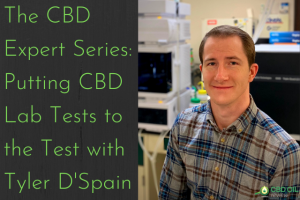
The CBD Expert Series: Putting CBD Lab Tests to the Test with Tyler D'Spain
Read More
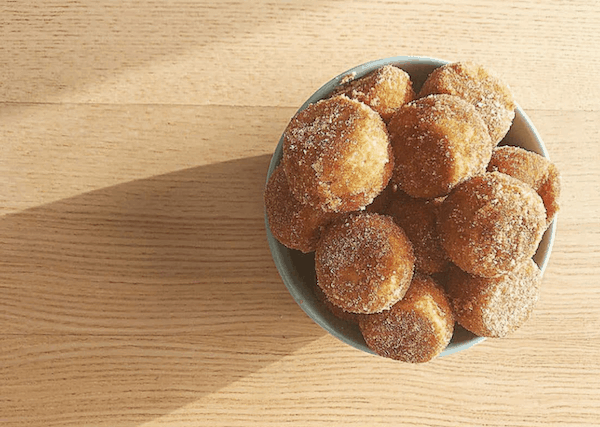
MasterChef Nick Nappi's CBD Apple Cider Donut Hole Recipe
Read More
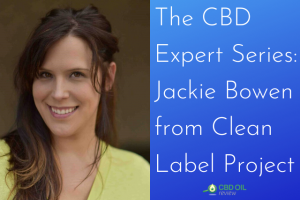
The CBD Expert Series: Jackie Bowen from Clean Label Project
Read More

The CBD Expert Series: Certificates of Analysis 101 with Dustin Jones
Read More
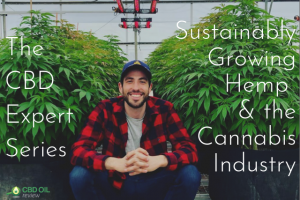
The CBD Expert Series: Sustainably Growing Hemp & the Cannabis Industry
Read More
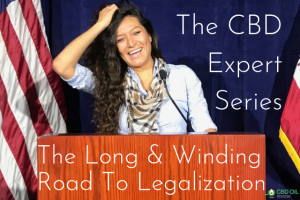
The CBD Expert Series: The Long & Winding Road To Legalization
Read More
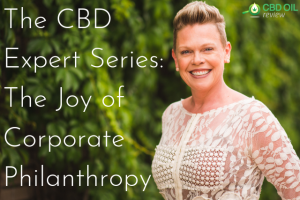
The CBD Expert Series: The Joy of Corporate Philanthropy
Read More
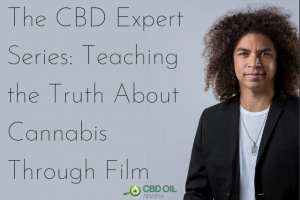
The CBD Expert Series: Teaching the Truth About Cannabis Through Film
Read More
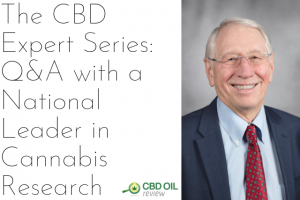
The CBD Expert Series: Q&A with a National Leader in Cannabis Research
Read More

The CBD Expert Series: Sexual Health and Pleasure with Sex Educator Kiana Reeves
Read More
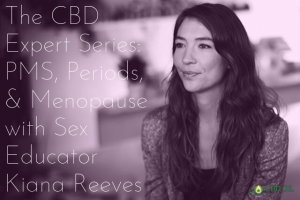
The CBD Expert Series: PMS, Periods, & Menopause with Sex Educator Kiana Reeves
Read More
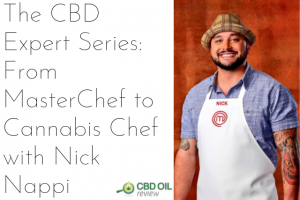
The CBD Expert Series: From Masterchef to Cannabis Chef with Nick Nappi
Read More
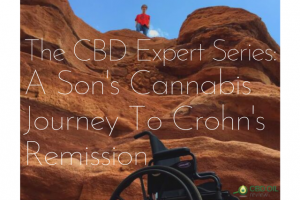
The CBD Expert Series: A Son's Cannabis Journey To Crohn's Remission
Read More

The CBD Expert Series: Your Friendly Neighborhood CBD Chiropractor, Dr. Paul Paez
Read More

The CBD Expert Series: Discussing Cutting-Edge CBD Research with Pelin Thorogood
Read More

The CBD Expert Series: CBD Dosage & Adverse Effects with a Naturopathic Doctor
Read More

The CBD Expert Series: Talking Drug Tests with a Lab Tech
Read More
Opinions expressed in this article are those of our guest (the interviewee) and not necessarily of CBD Oil Review.
6 Smart Questions to Ask BEFORE You Buy CBD
Get the Ultimate CBD Buyer’s Guide and you won’t look at CBD the same way again!



 search
search